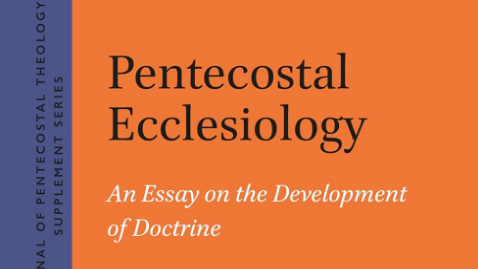The Term “Pneuma” and the Holy Spirit’s Gender

Table of contents
In the New Testament, the Greek term “pneuma” (πνεῦμα) translates to “spirit” and is equivalent to the Hebrew word “ruach” (ר֫וּחַ). Both terms describe the Holy Spirit, but the cultural and linguistic backgrounds of Greek and Hebrew shape how we understand the Spirit, particularly in terms of gender and personhood. It seems it is apparent and obvious to some folks today that the Holy Spirit being female, but we must understand more.
Linguistic Background of “Pneuma”
- Neuter Gender in Greek: In Greek, “pneuma” is a neuter noun, meaning it does not have a masculine or feminine grammatical gender. This reflects the Greek language’s grammatical structure rather than making a statement about the nature or personality of the Holy Spirit.
- Gender in Greek Language: Greek nouns can be masculine, feminine, or neuter, but this grammatical classification does not necessarily imply gender in the way we understand it in human terms. Neuter nouns are often used for objects, abstract concepts, or things that do not fit neatly into masculine or feminine categories.
Theological Implications of “Pneuma”
- Personhood of the Holy Spirit: Despite the neuter grammatical form of “pneuma,” Christian theology affirms the Holy Spirit as a person, not an impersonal force. The Holy Spirit is the third person of the Trinity—God the Father, God the Son, and God the Holy Spirit—who is fully divine and active in the world.
- Attributes of the Holy Spirit: The New Testament attributes actions and characteristics to the Holy Spirit that indicate personhood, such as teaching (John 14:26), guiding (John 16:13), interceding (Romans 8:26), and possessing a will (1 Corinthians 12:11). These actions show that the Spirit is more than an abstract force; the Spirit engages with believers in a personal way.
Gender and the Holy Spirit in Theology
- Human Gender: It is evident that Christian doctrine understands the Father and the Son, both being of male gender. This is mostly because of a few things. God made Adam in the image of Himself, and he turned out male. Secondly, Jesus came and claimed himself as the Son of God, and he was also male. However, unlike the other persons of the Trinity, the Holy Spirit has not transcended the interlude from the spiritual to natural, either through an image or by physical birth. So, gender has never been attributed to the Holy Spirit as thoroughly as we attribute to the other members of the Trinity. The human language uses masculine, feminine, or neuter forms; these are not meant to define God’s essence.
- Biblical Language: The Bible occasionally uses masculine pronouns (“He” or “Him”) for the Holy Spirit, but this often seems a reflection of the Greek language’s grammar or the need to use pronouns for readability rather than a literal attribution of gender. In most other instances, the Spirit is called “the Spirit” without gendered language in Greek. However, curiously, we use the male gender more freely in the English translations. For example, investigating the four times that the Holy Spirit has been referred to as a male in the Gospels (Matthew 3:11, Mark 1:8, Luke 3:16, John 14:26), each time, the Greek version uses a neuter gender, simply referring to the Holy Spirit as “ἅγιος πνεῦμα”. In the famous oft-quoted scripture Matt 2:22 (below image) -“He will baptize you with the Holy Spirit and fire“, the Holy Spirit is gender neutral.

Comparing “Pneuma” to “Ruach”
- “Ruach“ in Hebrew: In Hebrew, “ruach“ is a feminine noun, but this grammatical gender does not imply that the Spirit is feminine in nature. Similar to Greek, the Hebrew language’s grammatical gender doesn’t always correspond to human gender identities or characteristics. The Hebrew understanding of the Holy Spirit was minimal because the references are so few, but even in the few instances, a Hebrew would not walk away with the understanding that the Holy Spirit is female. This is despite the usage of grammatical gender.
- Consistent Understanding Across Languages: The shift from Hebrew (“ruach”) to Greek (“pneuma”) shows that while linguistic differences exist, the essential theological understanding remains consistent: the Holy Spirit is God’s active presence, transcending human limitations and categories, most times even gender.
Holy Spirit in the Context of the Trinity
- Equality Within the Trinity: Christian doctrine teaches that the Holy Spirit is co-equal with the Father and the Son. This equality underscores that the Spirit is fully divine, possessing the same nature as God the Father and the Son, without implying any specific gender. But if the other two of the Trinity are male, what are we make of the third – who is co-mingled and consubstantial?
- Focus on Divine Action, Not Gender: The Holy Spirit is understood through actions like comforting, empowering, and guiding believers rather than through gendered descriptions. The emphasis is on the Spirit’s work in the lives of individuals and the Church, illustrating the Spirit’s integral role within the Trinity.
Conclusion
The Greek term “pneuma“ refers to the Holy Spirit in a way that transcends human gender, focusing instead on the Spirit’s divine and personal nature. This emphasis on the Spirit’s role and actions as part of the divine Trinity enlightens us about the Spirit’s unique personhood and divine attributes that surpass the human understanding of gender. In my preliminary investigation through the other books until Revelation, each time the Holy Spirit is referred to, it is with a neuter gender in Greek.



